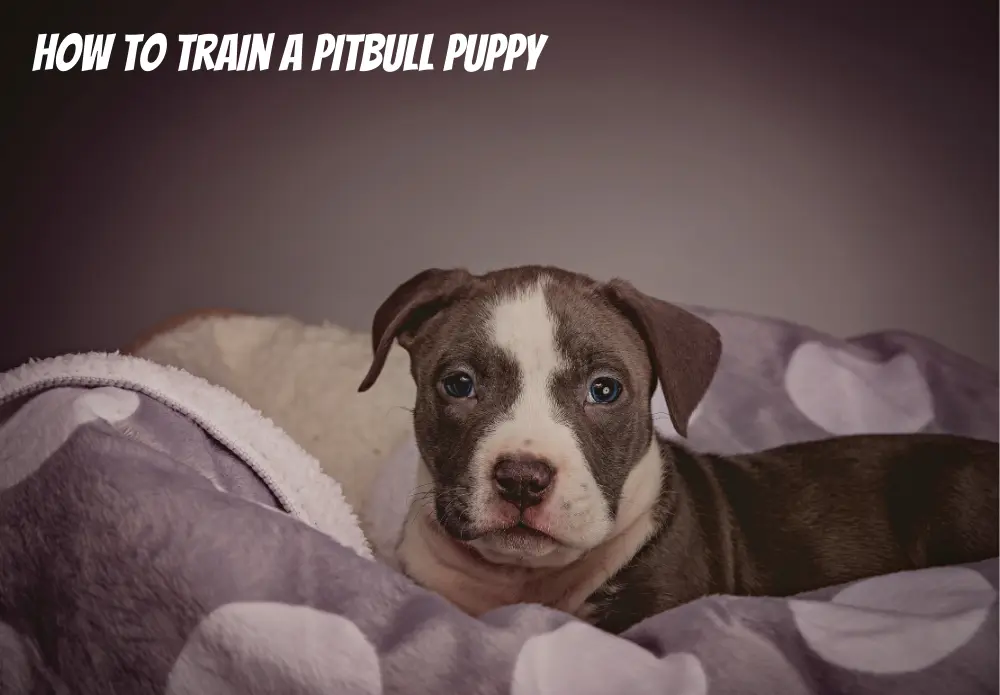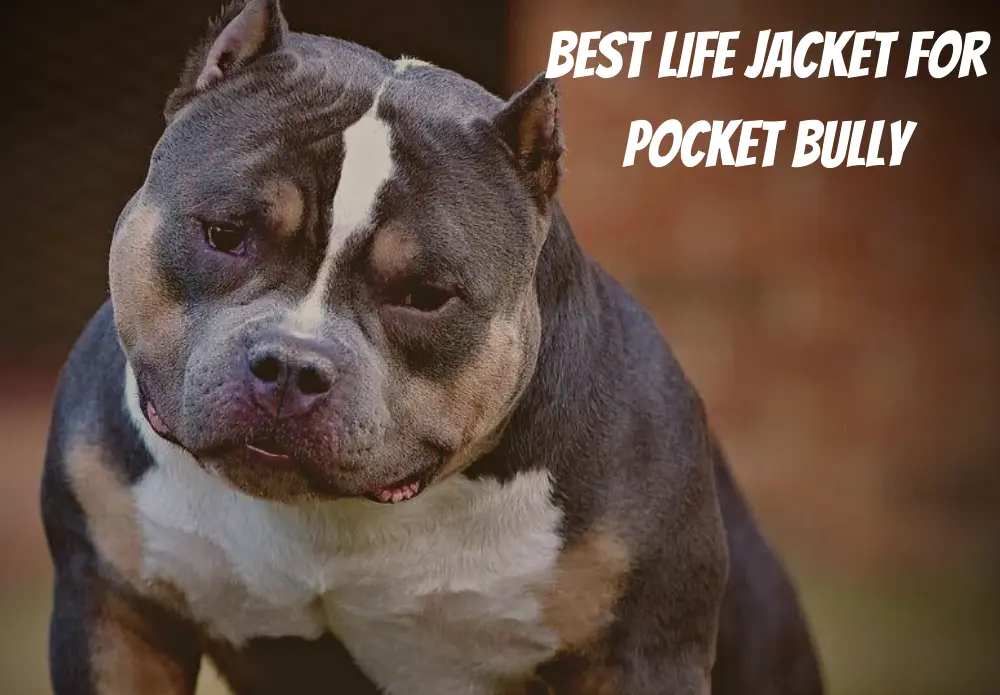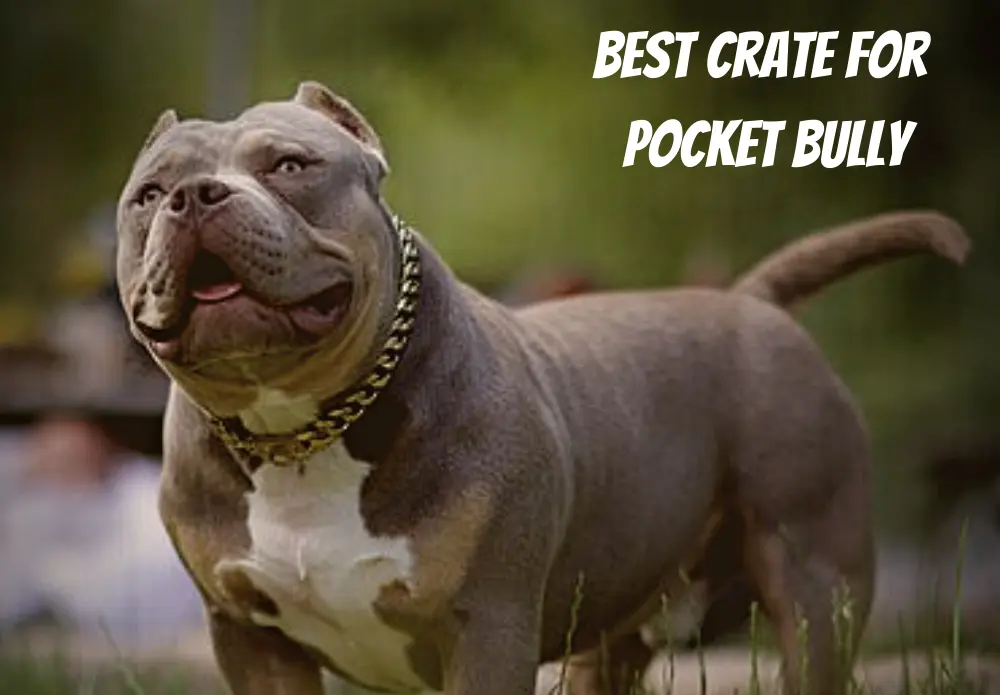Training a Pit Bull puppy from a young age is essential. Unfortunately, Pitbulls have been given a negative image that is entirely undeserved. Pitbulls are some of the sweetest, most loving, and most affectionate dogs you will ever meet.
However, like any other dog, their character is also a result of their environment. And that’s why ensuring your Pitbull puppy receives proper training is essential.
Not only does it help secure your Pitbull will have a high quality of life, but it also helps remove the toxic stigma surrounding this wonderful breed.
What You Should Know Before Training Your Pitbull Puppy
Let’s start here by laying out the basics. Past specific techniques and activities, there are a few fundamental factors to understand when training a Pitbull puppy.
One is consistency. You must be consistent when starting a training regimen or setting a rule or boundary. Sending mixed messages will confuse your puppy, and it will also undermine your authority.
And if you’re not firm when keeping your rules or boundaries, you will lose control of the relationship. Establishing and holding power is paramount so your dog will follow your commands.
Another aspect is positive & negative reinforcements. Never punish your Pitbull. Positive reinforcement is a more practical, compassionate, and pleasant way to train your puppy. In addition, it helps to form a bond between the two of you that will last for years to come.
Finally, timing is also essential, as you have heard the expression “can’t teach an old dog new tricks.” Although starting later in life isn’t necessarily useless, the younger you train your Pitbull, the better.
When Should I Start Training My Pitbull?
Start training your Pitbull as soon as you bring him home. A puppy will quickly pick up behaviors and understand commands compared to an older dog.
Pitbulls are intelligent and owner-pleasing dogs that can be trained relatively quickly. When you bring your Pitbull puppy home for the first time, begin training in a quiet and private place without distractions.
Keeping your Pitbull under a leash is best if you train in a public place.
How to Train a Pitbull Puppy?
1. Setting Up a Training Environment
The moment you bring your Pitbull into your home is the first impression, which should be good. It is also essential that your house is ready for the training lessons.
Before training your Pitbull, you must set up his training environment. Ensure your Pitbull gets his own space and your family members mature enough to let him have his own time.
Here are a few steps to get you started on the training.
2. Essential Training Tools
When you bring your Pitbull home, you must establish a ground set of rules. And to do that, you must be prepared and get the following equipment.
- Collar and leash
- Harness
- Crate or cage
- Food bowl
- Clicker
- Treats
- Chew toys
- Fence
3. Choosing the Right Space
After choosing the tools for training, you need to select the right place for training. When choosing a training place, remember to have privacy, light, water, moderate temperature, and be big enough for your Pitbull to play around.
Ensure the training space gets a lot of sunlight to help grow strong bones. Now that you have set up the environment for training, it is time to start it.
You must gradually establish wanted behaviors and habits when your puppy arrives home to educate them. Use the training equipment to help you and start with basic training.
4. Basic Training
Laying the basis of your training with your Pitbull dog is one of the most crucial things you will do as a trustworthy owner. This initial training can take a little time, or your Pitbull pup will be easy to train. Either way, be patient and practice these five basic commands often.
Remember to keep some delicious-smelling and tasty treats ready. Your Pitbull puppy will be alert when they know you have something delicious.
Reward them every time they execute these commands, even for a few seconds. Keep increasing the command duration over time, but a slight improvement is still improvement at first. Give your Pitbull the treat.
When rewarding, use a signal word like “yes” or “nice job” to let your dog associate that signals with having finished the Command. Some folks prefer the clicker training method instead of the verbal signal, which can also work.
Sit Command
If you have a treat in your hands, let your Pitbull know that you have it, let him smell it, and be aware of which hand it is in. Then follow these three simple steps.
- Place the backside of your treat hand near your Pitbull’s nose.
- Raise your hand so Pitbull’s head follows, and his butt goes down.
- You say, “Sit,” and give him that tasty treat as soon as he sits down. Followed with a “yes,” “nice job,” or whatever praise signal you choose
Repeat this multiple times, and slowly increase the duration between the “sit” and the reward. I mention putting the backside of your hand close to his nose because you can eventually utilize this as a hand signal.
Stay Command
I already know you have a treat in your hand, and your dog knows it, so let’s begin.
- In your non-treat hand, make a flat palm stop motion and say, “Stay.”
- Take a step or two back.
- If they have remained where they are, give the release cue “yes” or “nice job” and let them come get their treat and lots of praise afterward.
Repeat this several times, taking more steps back each time. Always use the hand signal when you say “Stay” to associate the two for more straightforward commands. Once they nail the stay, we are ready for “Leave it.”
Leave it Command
Leave it will be similar to the stay but without the treat in your hand. I use the one-finger in-the-air hand signal.
- Point your finger up, palm facing your Pitbull puppy. Doing this on the floor with your puppy will be easier at first.
- Have your puppy sit or stay and place a treat on the floor between you and the dog.
- Say “leave it” with your hand signal.
- After a few seconds, you can give the release cue “yes,” and they can come to collect their reward.
Repeat this, adding more time and distance between you and the treat. Give lots of praise when they “leave it.” When you get to the more advanced version, you can work on your dog, giving direct eye contact and not looking at the treat.
Down Command
You should use the “Down” Command to get your dog to lie on their belly. I have often seen this used for that and getting the dog to stop jumping up on someone or something.
Stick to one Command for one specific response. Have you got your treat? Good. Get down on the floor again with the puppy.
- Using your treat hand, get your dog to follow as you move your palm to the floor.
- As your Pitbull follows your hand toward the floor, move it away from the dog to get it to stretch out its body along the floor on its belly.
- Once they have the belly on the floor in the down position, you say “Down” and reward them.
This one may take a little practice, but keep going, stay positive, and don’t get frustrated. If your Pitbull doesn’t get it a few times, do a few quick “Sit” commands, then return to the “Down” practice.
Come Command
Last is how you train a Pitbull puppy to come when called. This one will especially come in handy for all sorts of situations. Making this one fun and rewarding is very important.
When your Pitbull hears the command “Come,” it should be thrilled to run right up to you.
- Start training this Command with a leash on your dog. Get on the floor, give a hand gesture motioning to yourself, and say, “Come.”
- Gently pull on his leash toward you if they don’t naturally come.
- Give him the yummy treat and praise when he is right before you.
- Once he does this with no leash prompt, you can remove it and increase your distance.
Try doing a “Stay” and have the release “Come” to practice both skills. Once they have learned this skill, try practicing in different environments with more distractions.
Two crucial things to remember when using the command “Come” to ensure you get the response you want are:
Try Never to Repeat Yourself
Ensure you have your dog’s attention before using the “Come” Command. We have all seen those owners bark, yelling, “Come! Come! Boy Come! Come Silky! Come!” The dog has wholly tuned out; this is called poisoning the cue. It will become background noise to your dog.
Never Scold Your Dog when They Come.
If your Pitbull is at the park or in the yard and may not respond to “Come” immediately, but they do eventually return, never punish them. You do not want them to associate “Come” and return to you as a negative; this defeats the entire purpose of the Command.
5. Advance training
After your Pitbull has learned the basic skills, it will be easier for you to teach him more advanced tricks and manners.
Teaching Social Skills
Generally, Pitbull dogs are very friendly pets. Growing up encircled by family is a perfect starting point for sharpening a Pitbull’s socialization talents.
Training them to act reasonably with people and pets can start with regular walks. It is a fantastic way to exercise your Pitbull and keep him healthy and happy. Outdoor walks are also ideal for leash training and mingling with other dogs.
You can introduce your Pitbull to other people like your neighbors, friends, people you meet on your walks, pets, and others. You can also begin training them to get accustomed to a vet visit.
Nevertheless, it is best to vaccinate your Pitbull before socialization training. Pups go through a biting and chewing stage. Thus, exposing them to other people and pets is not an exemplary idea when they are not vaccinated.
Potty Training
Another necessary training that Pitbull require is to learn to potty properly. Potty training your Pitbull earlier will make life more comfortable for ever hold.
Your Pitbull should understand that relieving indoors is not a great idea. This training can have a lot of hits and misses; therefore, you have to struggle more and have patience.
Watch your puppy if they are sniffing, circling, and squatting. These are indications that they are likely to pee or poop. Take your Pitbull outdoors or to his potty area and wait until he finishes clean-up the mess.
Clean up instantly if your puppy does a potty during a walk, particularly in a public place.
Crate Training
Crate training is a perfect way of teaching subordination to Pitbull. It also gives them a secure and relaxing space of their own so they can soothe. Always remember that the use of crates is not a punishment. Instead, it must be a secure place for them to rest and sleep.
- Make sure it is big enough for the dog to move around. Moreover, crates should let them watch what’s going on around them.
- Never force them inside the crate.
- Encourage your dog to explore the crate by putting blankets, toys, and some food.
- Once comfortable inside the crate, feed them inside it with the open door. You may close it when your pet feels secure after feeding.
Increase their stay slow until they feel comfortable enough to sleep inside the crate.
Exercise, Swimming, and Games
A healthy and fit Pitbull requires exercise. Besides the ordinary walks and tours, you can include activities your dog will enjoy.
Swimming is an all-around exercise, and most dogs love it. Let your Pitbull swim and play in the water, but always be mindful of their stamina. Let him get out of the water when he wants to.
Pitbull’s agility is ideal for training, combining obedience and physical activity. It involves a circuit of different obstacles that the dog must jump, dodge or cross. The master always goes by their side, which makes it very rewarding for the animal.
6. Consistency and Patience
Being a Pitbull parent, you have to be consistent and patient. You should live by this motto to accomplish your goals and be a great owner.
Importance of Consistency
Short 15-20 minutes training sessions done every day or a couple of times throughout the day can reap great rewards in the short and long term. It will be necessary, especially with your Pitbull.
Consistency is critical when training your Pitbull. Training every day will help commands and obedience training stick and provide that excellent mental stimulation your Pitbull craves.
A daily training session will make your smart Pitbull even smarter and strengthen your bond with your dog. This time is so crucial for both you and your Pitbull puppy.
Importance of Patience
Patience is a virtue. Pitbulls may be smart but are goofy and have a short attention span, so their behavior may tempt you before they are fully trained. Being patient when training your Pitbull is best, as they act like babies.
Always use positive reinforcement, and the remaining patient is vital to do it. Watching them disobey your commands can be exhausting, so remember that your dog can read your body language and react accordingly.
Pitbull is not a human, so remember it is doing its best when you get frustrated. So relax, take a deep breath, and start over on a happy note. Watching you smile, your Pitbull will get excited and look forward to what you have following for them.
7. Consider Canine Good Citizen Certification
The Canine Good Citizen Certification program is a skill-testing program initiated by the American Kennel Club (AKC). The course involves testing your puppy through 10 skills, and if your dog passes the test, he gets Canine Good Citizen Certificate from the AKC.
To pass the test, your Pitbull must know the basic obedience skills, be able to walk through crowds, open to being petted by strangers, and not react to other dogs that pass by him. You also have to sign the Responsible Pet Owner Pledge.
CGC certification is open to all breeds, pure or mixed, of dogs, including Pitbulls. A CGC certificate is a massive help for the Pitbull breed, often subject to human hatred due to its history of aggression. With CGC, you can have proof that Pitbulls are well-behaved, loving, and social pets.
You can also show your landlord or neighbors that your dog is a good citizen. You can find suitable classes and evaluators for the Canine Good Citizen program on the American Kennel Club website.
FAQs – Frequently Asked Questions
Are Pitbull Puppies Easy to Train?
Pitbulls are easy to train thanks to their higher intelligence and the need to please their owners. They have lots of energy, and stamina helps them keep going, and you can use praise to motivate them.
How Do You Discipline a Pitbull Puppy?
If you want to discipline your Pitbull puppy, tell them you are the boss as soon as you bring him home. But do not hit or scold the puppy. Give him praise for good things, and stop giving him attention when he’s naughty.
What Are the Basic Commands to Train a Pitbull Puppy?
The basic commands you should teach your Pitbull puppy are sit, stay, leave it, down, and come. Your puppy should know these basic commands to learn more advanced tricks and obedience.
At What Age Should a Pitbull Be Trained?
Start training your Pitbull at 3 to 8 weeks as soon as possible. By 18 months, your Pitbull should be fully trained and socialized.
Conclusion
Pitbulls are easy to train despite their negative image as an aggressive breed. The distinction stems from how the general public views pit bulls. Ensure you keep your pitbull happy by training them to use healthy, natural, and delicious treats that aid their health and development.
The tastiest treats result in the most obedient and well-behaved dog. Take the time to train your pitbull, and you’ll have a happy, healthy family member who truly represents the breed.






